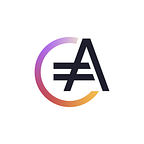Hadrien Zerah is a Managing Director at Nomadic Labs, actively working with his organization to ensure a smooth onboarding of projects onto the Tezos blockchain in France, Belgium & Luxembourg.
He is an automation engineer, and also holds a master’s degree in financial mathematics. He was working in Brazil in the energy field when in 2017 he first read the Tezos white paper. He immediately got involved in his spare time, and in 2019 decided to make the development of the Tezos blockchain his primary occupation.
What makes the Tezos blockchain environment-friendly?
Hadrien explains that a blockchain is composed of blocks, that are data storage space. As more data is stored, more empty blocks are needed to store the new incoming data. Those blocks have to be created by someone, they don’t appear on their own.
The computers (and their owners!) who create such blocks get greatly rewarded: each time they create a block they earn a significant amount of coins (Bitcoin if they’re creating Bitcoin blocks, Eth if they’re creating Ethereum blocks, tez if they’re creating Tezos blocks, etc.).
So why wouldn’t anyone start creating blocks if all it takes is a computer?
Whenever a new block is needed to store more data, the blockchain makes a call to the block creators, who have to compete to be chosen to create the block.
What does it all have to do with the environment?
It’s about how people compete to be chosen to create the block. Blockchains such as Bitcoin or Ethereum use what is called a “proof of work” consensus algorithm. When a new block is needed, the system puts out a difficult mathematical equation, and the first computer to solve it gets to create the block, and reap the rewards.
To get the best chances to be chosen, you need to have the best computer, capable of processing enough possible solutions to the equation to be the first to find the answer. This consumes an incredible amount of energy, as all those powerful computers struggle to find the answer to win the race.
Tezos, on the other hand, uses a “proof of stake” consensus algorithm to pick who gets to create the block and reap the rewards. A PwC study has found that this protocol consumes the same amount of energy per year as 17 households, which is 2 million times less than blockchains that use the “proof of stake” consensus algorithm such as Ethereum or Bitcoin, therefore solving the issue of negative environmental impact of the blockchain.
What is the most exciting thing about Tezos?
Tezos is a self-upgradable blockchain, it has the ability to adapt and modify itself through a voting system. Tez (the Tezos coin) holders can vote to bring innovation onto the network. The blockchain has actually already evolved 8 times following those types of votes.
This is not the case of blockchains such as Ethereum, which makes it extremely difficult for them to implement changes. It is the main reason behind the delays in Ethereum 2.0: the inability to make it go from a proof of work to proof of stake protocol without creating a duplicate of all the assets that were on the original version.
This creates an obvious issue for NFTs: they would not be deleted on the “old version”, that will still be preferred and used by a category of users (miners) who do not agree with moving to a new protocol (for instance because they own an expensive computer capable of solving the equations to create blocks).
This means that if I own a unique NFT on Ethereum, after the change, I will have that NFT both on Ethereum and on Ethereum 2.0. Thus, it will not be unique anymore. That is why it is more likely to see layer 2 solutions appearing that would run on top of the Layer 1 Ethereum rather than having Ethereum 2.0 (see here).
The Tezos ecosystem has gained significant traction from leading brands, artists, creators, and sport franchises as the place to mint cost and energy-efficient NFTs. In 2021 alone, the Tezos network processed over 50 million transactions and has been selected as the blockchain of choice by Art Basel Miami Beach for the award winning Tezos Ecosystem Exhibition, Red Bull Racing, and McLaren Racing for their NFT collectible platforms, and most recently Ubisoft Quartz platform for NFTs in-game.
Written by Eli Strzelecka 05 Jan. 2022 (Twitter: e_strzelecka)
